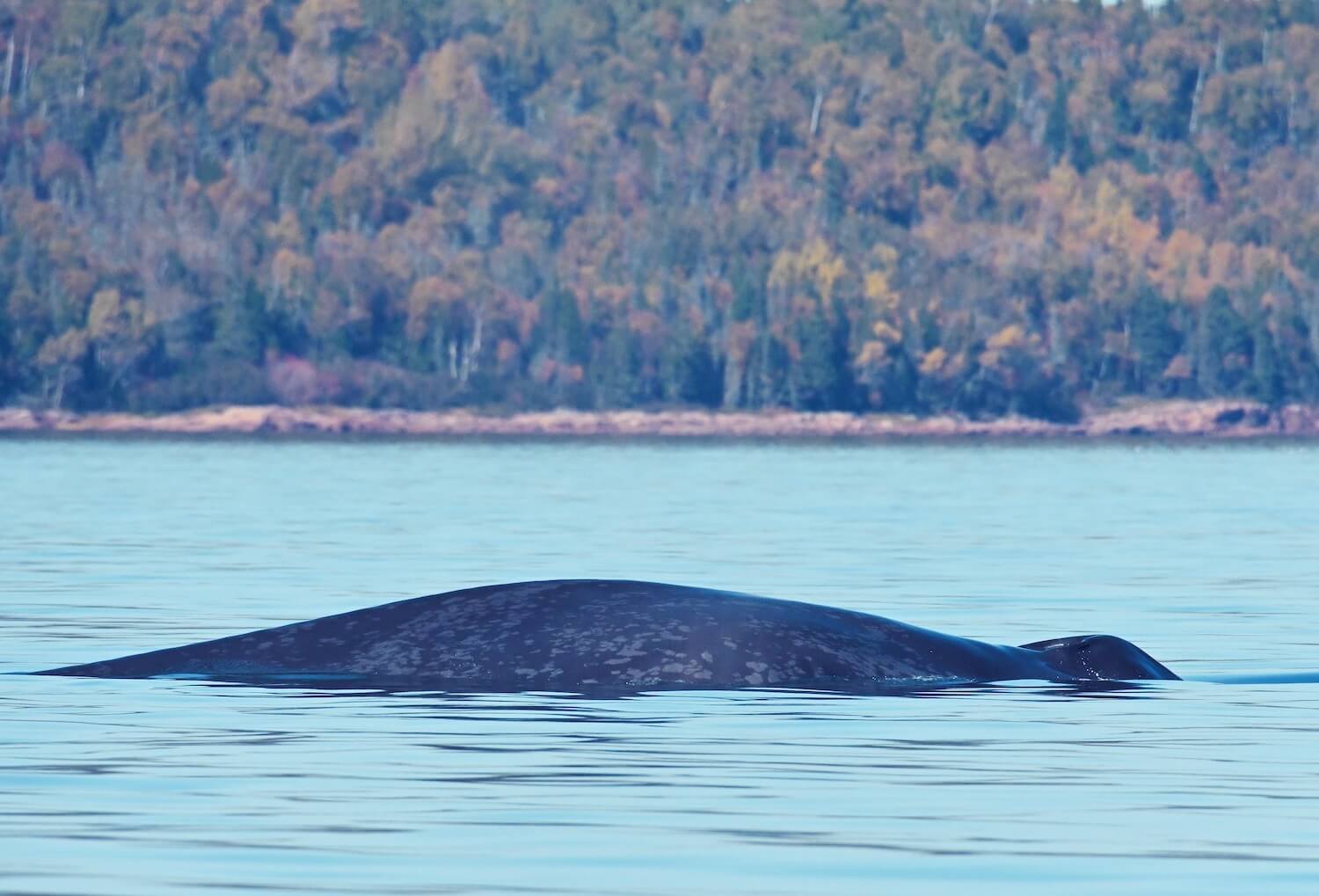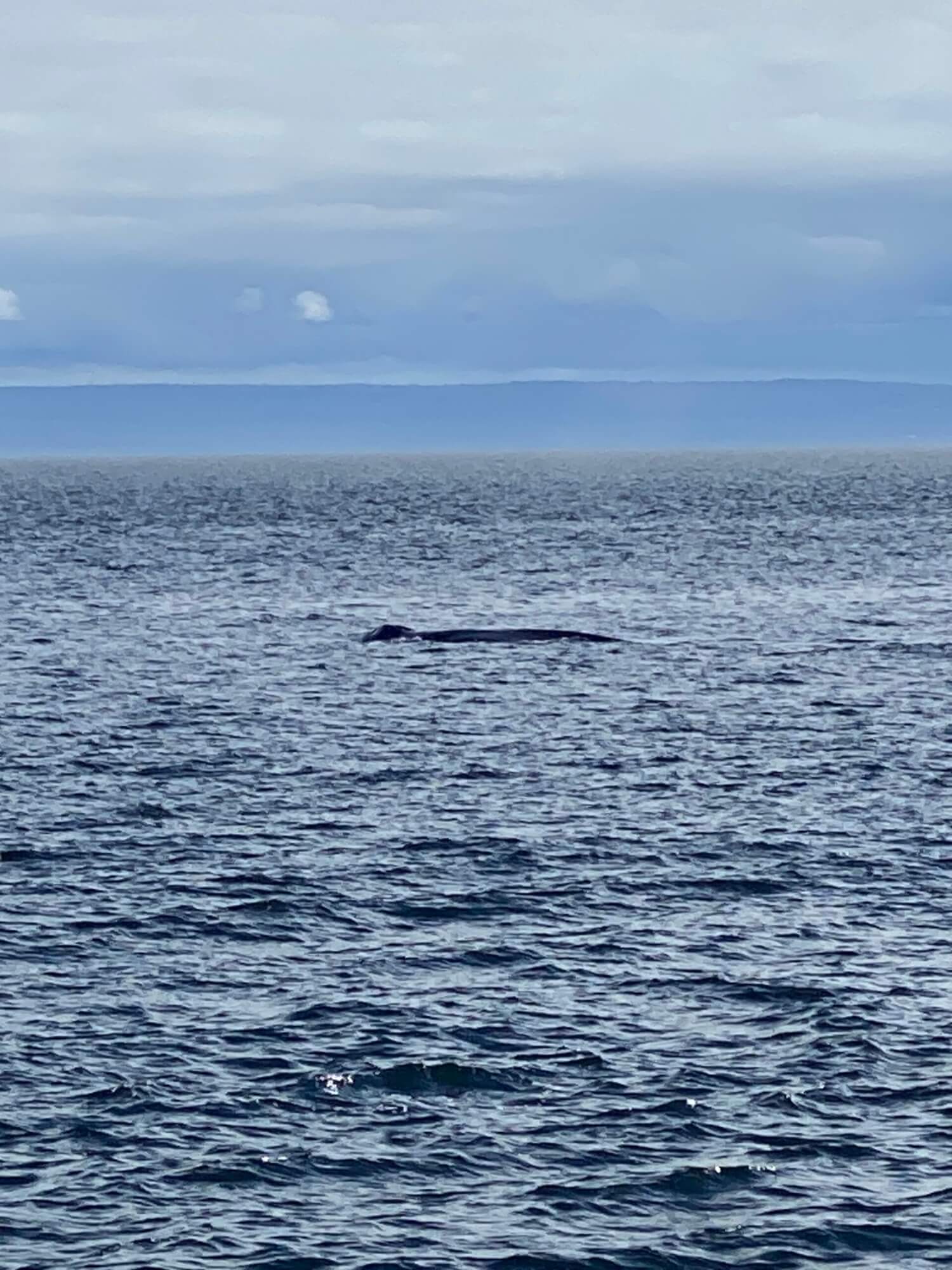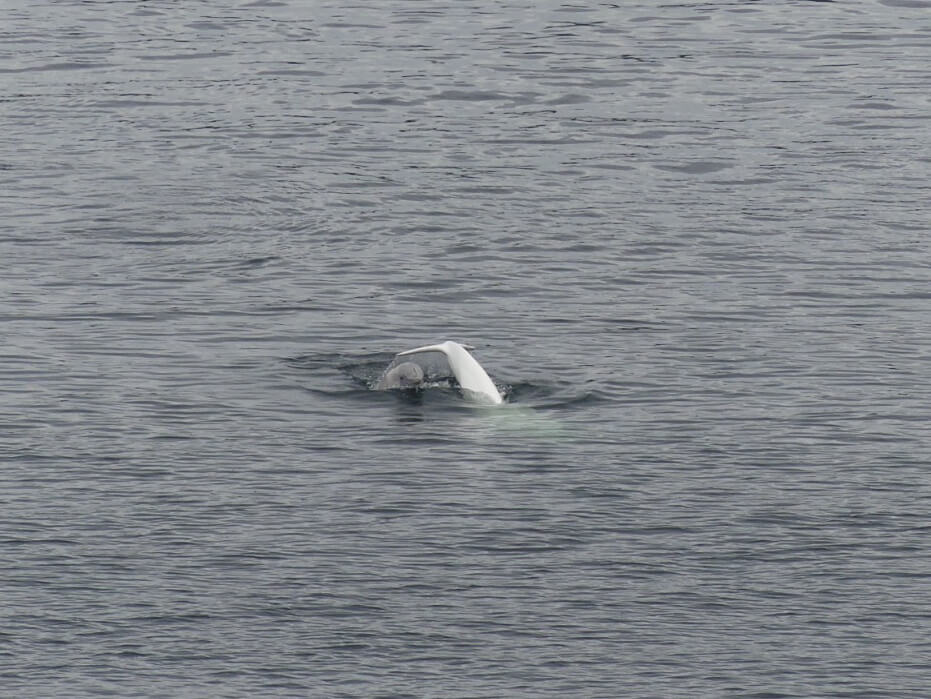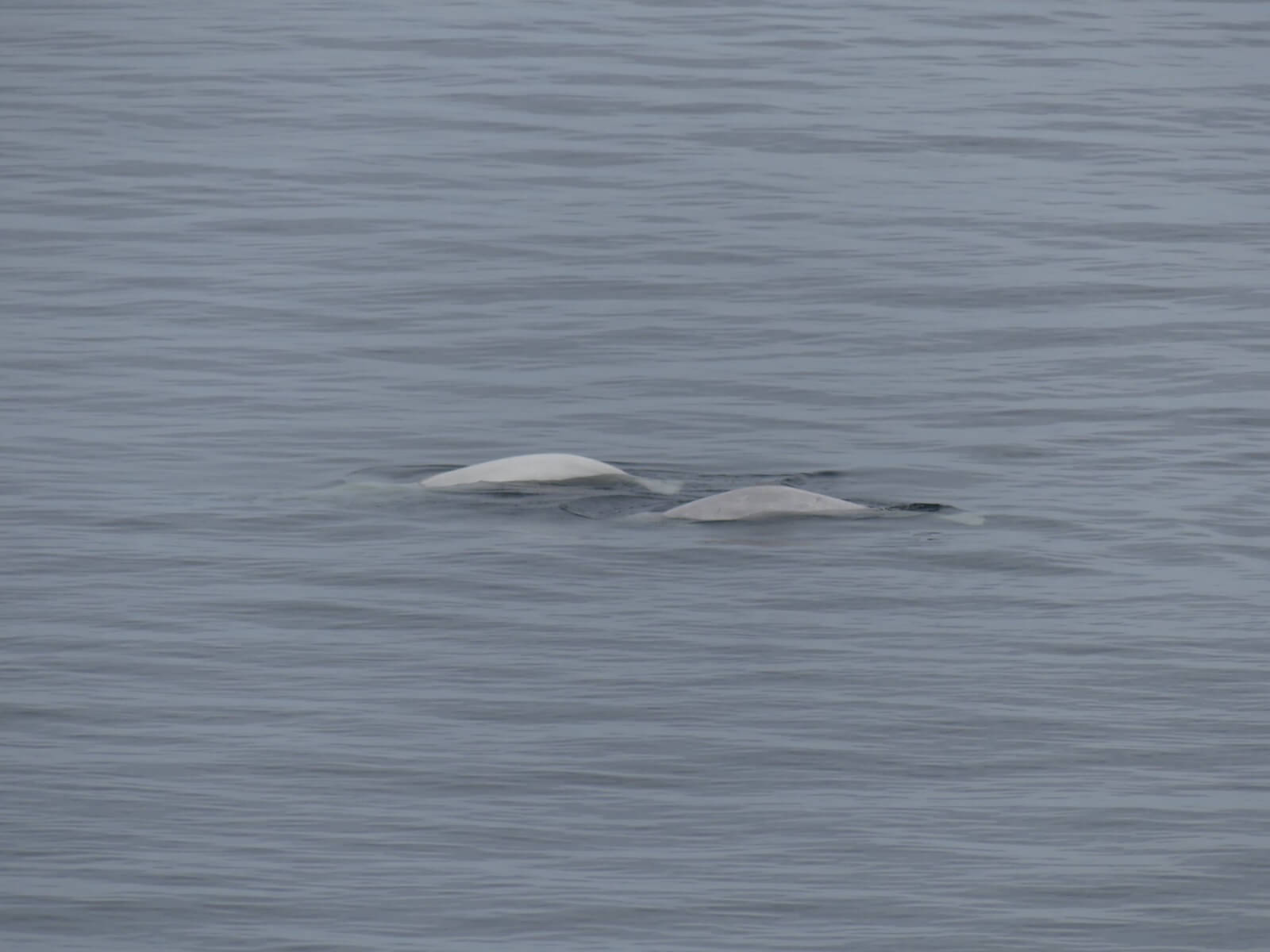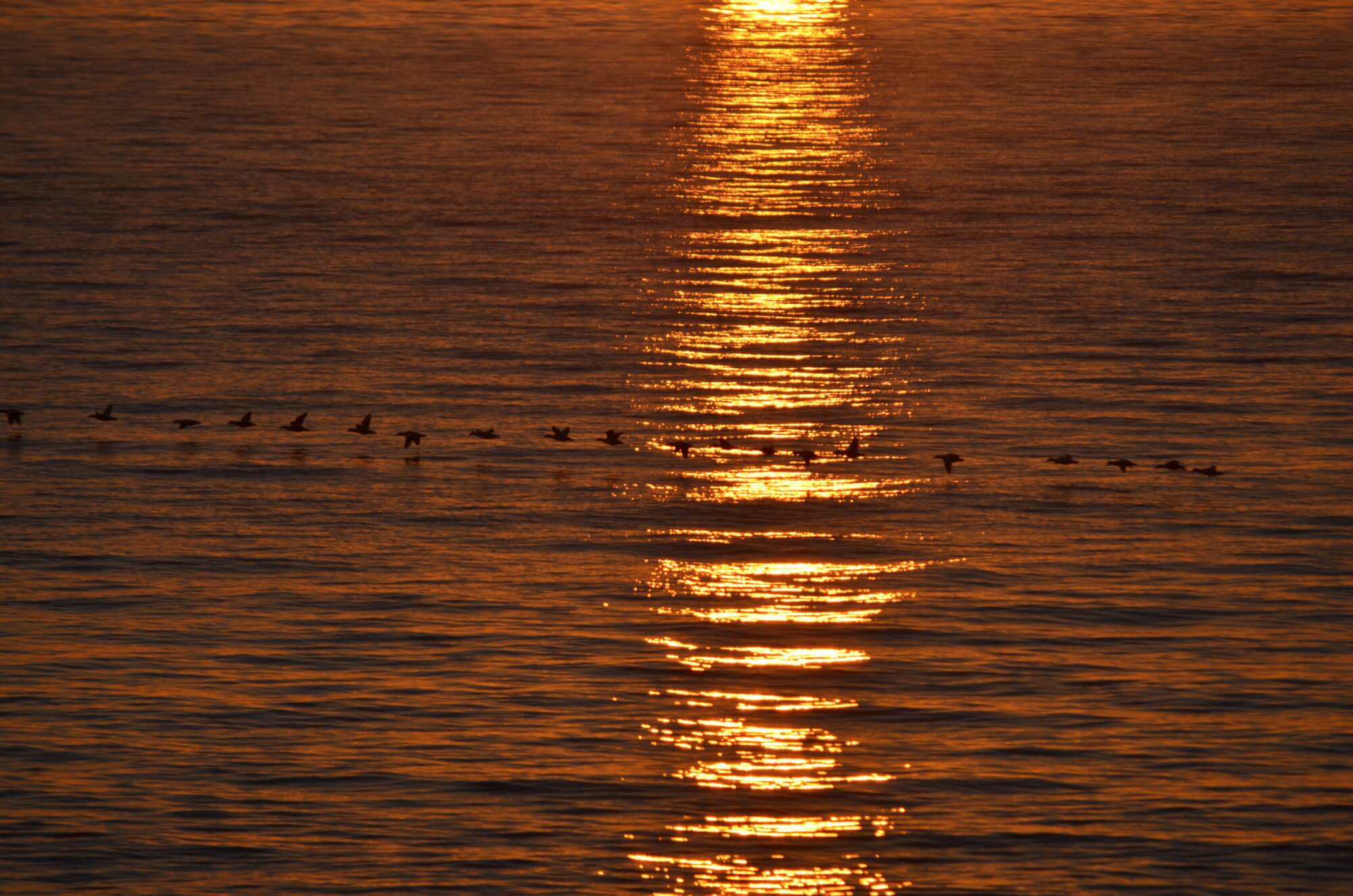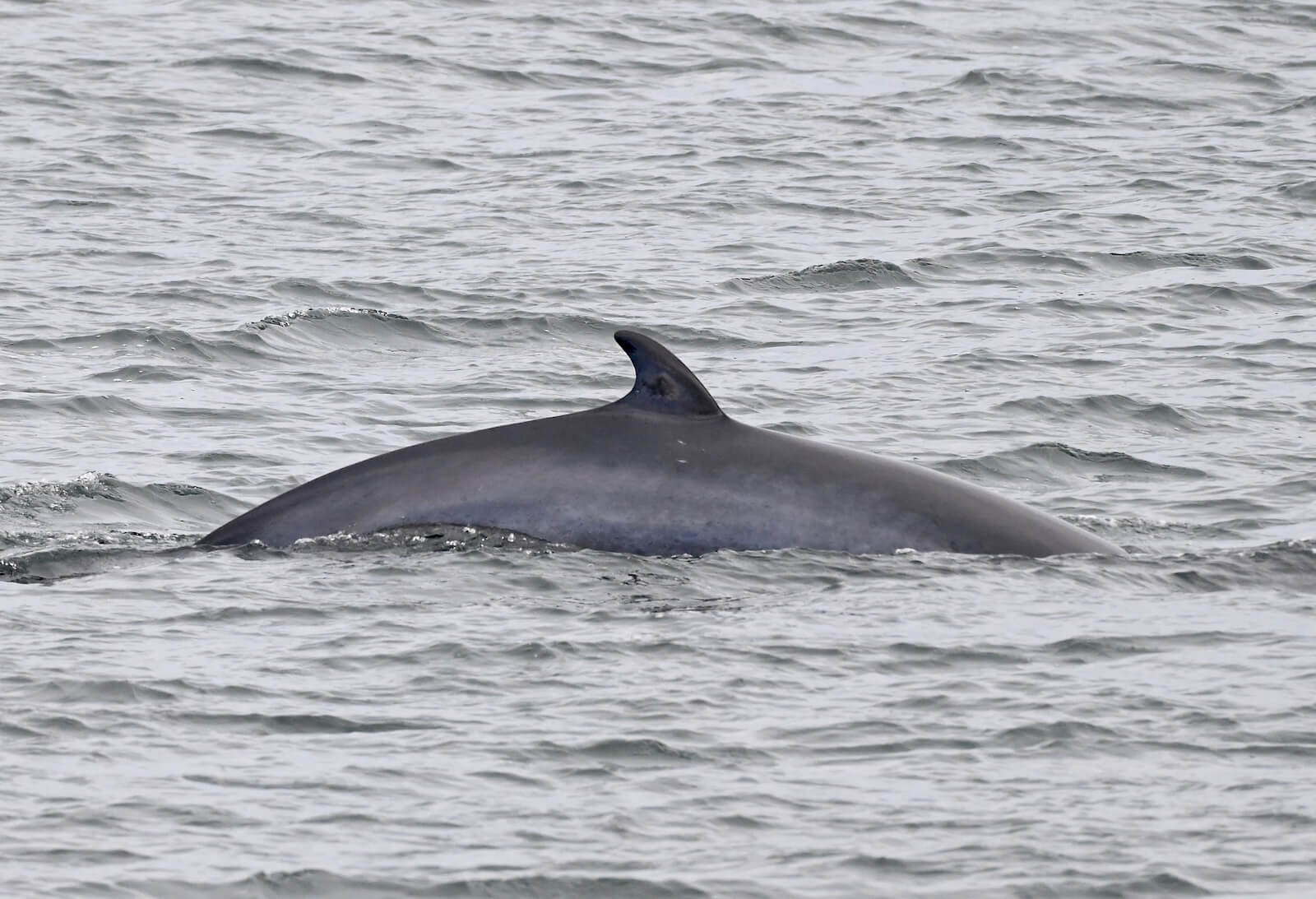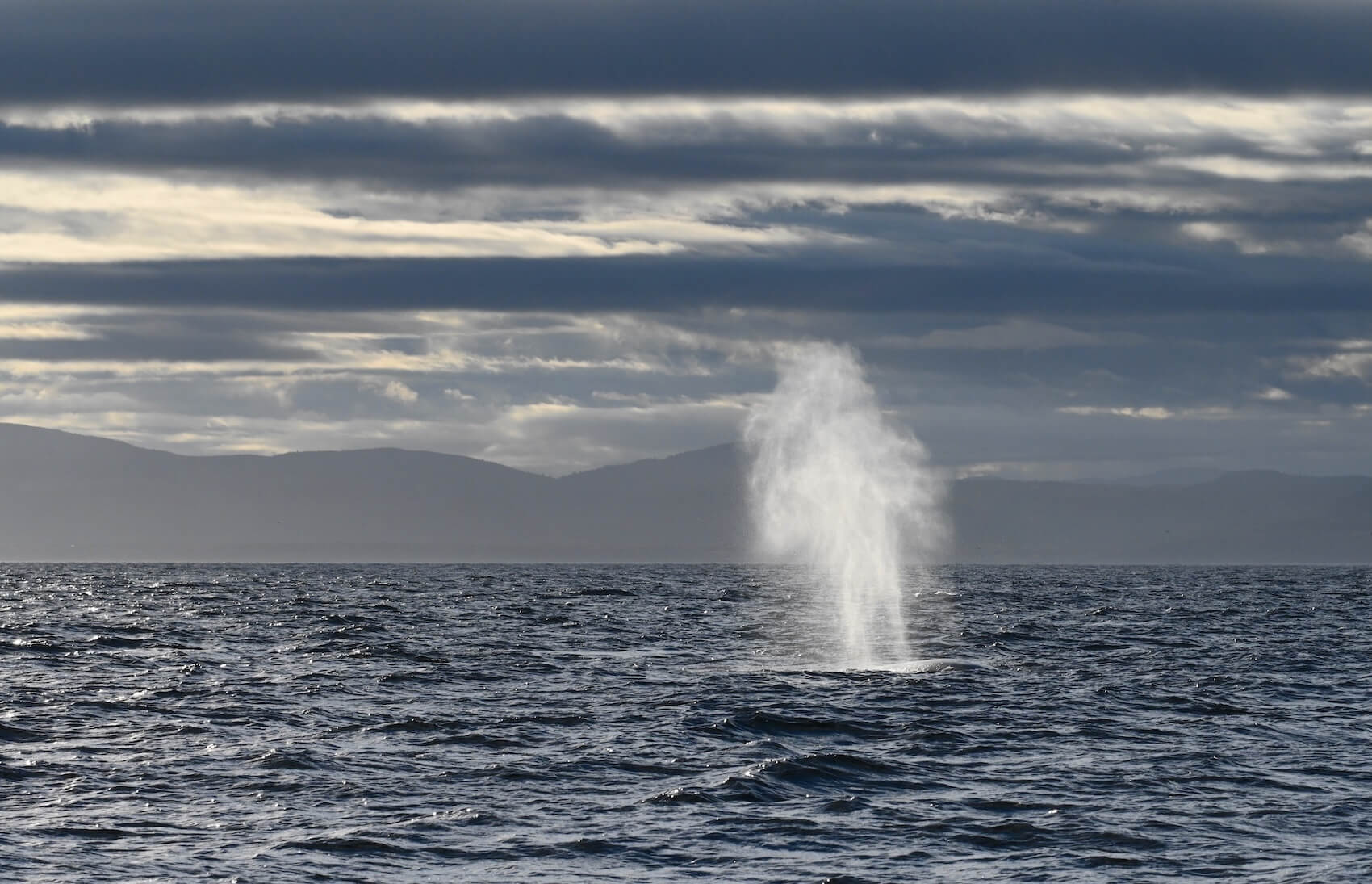With four blue whales spotted in the estuary, two near Franquelin and three in Gaspésie, it’s almost as if fall is their favourite season to visit the St. Lawrence! Other giants, including fin whales and humpbacks, have also been feeding in the cerulean waters of the river. White-sided dolphins are gradually approaching the estuary and humpback whales Éline (H929) and Wolfgang (H854) made a notable appearance in Manicouagan.
Dappled blue grey
Two long blue backs file past in Franquelin. One of these giants of the seas even approached Baie Saint-Pancrace. There were also three blue whales in Gaspé Bay and no fewer than four individuals in the Saguenay–St. Lawrence Marine Park. This species is endangered and protected, meaning the best way to observe it is to try your luck from the shores of the river.
One whale enthusiast was lucky enough to spot this immense mammal from the Marine Environment Discovery Centre in Les Escoumins. “All of a sudden […] a blue whale emerged right in front of me, perhaps 75-100 m away. It was awesome! I had it all to myself. With no boats around, it performed a long breathing sequence before disappearing below the surface.” The whale then moved on. Like a wildlife researcher, the enthusiast tried to follow the blue whale from shore by estimating the direction it was heading. Then she saw it resurface, meaning her prediction was correct! Other marine fauna was also present with all its usual charm: “I had two small harbour seals in the water practically at my feet, a grey seal poking its nose into the air like a bottle, plus belugas. I went to the ferry dock because when I was leaving I saw a humpback blow near Baie des Escoumins. I saw it show its tail three times, and as I was leaving the docks I finally had my first minke whale. The sky was a pale pink and the water was completely powder blue. It was pretty neat.”
A rumba this year for B335?
The blue whale B335 (in French) was identified in the estuary this past week. Known since 1996, this male was last observed in the area in 2018. Welcome back!
In the “Whale Portraits ” article dedicated to this individual, one can read that B335 has already put on some stunning displays in the past and that scientists at the Mingan Island Cetacean Study (MICS) know this whale well: “In late August 2007, blue whale specialist Richard Sears witnessed a “rumba” scene involving B335 off the coast of Les Escoumins. This male had entered into competition with B185, who was calmly pursuing the female B197, a.k.a. Pleiades. For 24 minutes, B335 raced against B185. Pectoral fins, tail tips, snouts, raised bodies… Spurts of water were flying in every which direction around the three animals. B335 ultimately moved away from the pair. Would he try his luck again later?” With so many whales in the St. Lawrence this fall, could B335 be looking for a partner?
Ivory and ash
After walking down to the water’s edge to admire the waves of the St. Lawrence, a resident of Saint-Irénée spotted a number of white whales. “It was Saturday or Sunday afternoon, and there were about a dozen of them! For an hour, we saw loads of them. I say twelve, but I’m being very conservative.” She was moved by her observations, which just goes to show that you never grow tired of seeing belugas! From Port-au-Persil in the municipality of Saint-Siméon, a naturalist was able to admire a mother-calf pair as well as about fifteen porpoises, all in the splendid light of the setting sun.
As can be seen on the marine mammal observation visualization tool Vigie marine , belugas have also been spotted offshore from the Les Escoumins–Trois-Pistoles and the Matane–Baie-Comeau / Godbout ferries. Did you know? Anyone can report their observations on this citizen science app!
In the fjord, a family passing through was surprised to see belugas exhibiting some very peculiar behaviours. From Pointe de l’Islet in Tadoussac, three minke whales were passing through before a group of these white whales showed up: “Really lots of belugas coming out of the fjord! I don’t exactly know what they were doing, but they were splashing everywhere. There were white individuals and grey ones too. With the fjord’s landscape ablaze and the sun warming the skin, it was sublime!”
Rays of yellow
From Pointe-des-Monts, a local resident managed to spot a few white-sided dolphins offshore. Some folks are eager to see them swim farther up the estuary! Six minke whales and about twenty grey and harbour seals were also present. Gaspé Bay was also the scene of leaping white-sided dolphins, not to be confused with tuna, which are being reported everywhere!
Brown fur
At the mouth of Rivière Saint-Marguerite, a resident saw an aquatic mammal quite different from a whale or a seal: a river otter! “At first, I thought it was a sea otter since it was in saltwater, but after researching the subject on the Internet, I learned that it was a river otter, which is not to be confused with a sea otter.” Indeed, they are two very different species, though both belong to the weasel family. As their range is confined to the North Pacific, sea otters are not found in Quebec. The river otter, which can be found in freshwater or saltwater, is half the size and gives birth on land.
Black and white, pectoral and caudal
“There was action this week in Manicouagan!” exclaims a resident of the Côte-Nord region. In addition to blue whales, observers tallied about ten minke whales, several grey seals gathered in groups and harbour porpoises, as well as the splashes of jumping tuna. Not to mention humpbacks: “At least three different humpback whales were present, including the duo Éline (H929) and Wolfgang (H854). The latter put on a long and spectacular display by slapping the water with its pectoral fins that were as impressive as they were humongous. The sounds and splashes in the autumn setting made for a most unforgettable moment!”
Where are the whales this week? Observation map
These data were reported by our network of observers. They give an idea of the presence of whales and in no way represent the actual distribution of whales in the St. Lawrence. Just for fun!
Click on the whale or seal icons to discover the species, the number of individuals, additional information or photos of the sighting. To enlarge the map, click on the icon in the top right-hand corner. The map works well on Chrome and Firefox, but not so well on Safari.
To display the list of sightings, click on the icon in the top left-hand corner.
Thanks to all our collaborators!
Special thanks go out to all our observers who share their love for marine mammals with us! Your encounters with cetaceans and pinnipeds are always a pleasure to read and discover.
On the water or from shore, it is your eyes that give life to this column.
Odélie Brouillette
Thalia Cohen-Bacry
Michel Comeau
Marie-Andrée Charlebois
Guylaine Côté
Michel Comeau
Laetitia Desbordes
Kevin Maltese-Crottier
Yael Medav
Diane Ostiguy
Renaud Pintiaux
Chloé Pazart
Pascal Pitre
Andréanne Sylvain
Marielle Vanasse
And to all the others!
Additionally, we would like to acknowledge the following teams that also share their sightings:
Sept-Îles Research and Education Centre (CERSI)
Group for Research and Education on Marine Mammals (GREMM)
Marine Mammal Observation Network (MMON)
Quebec Marine Mammal Emergency Response Network (QMMERN)
Mingan Island Cetacean Study (MICS)
Would you also like to share your observations?
Have you seen any marine mammals in the St. Lawrence? Whether it’s a spout offshore or just a couple of seals, drop us a line and send your photos to [email protected]!


